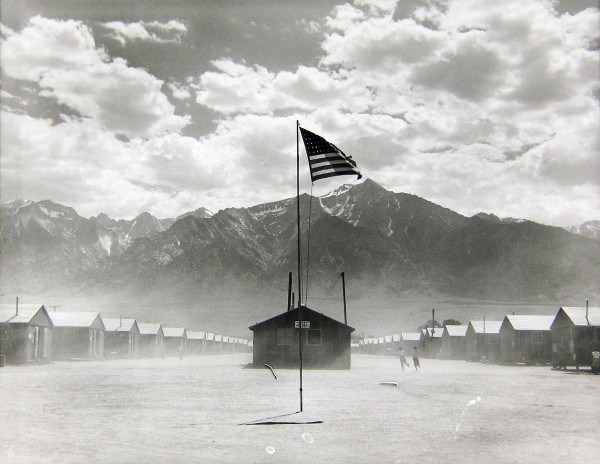World War II Homefront Era: 1940s: Internment of 120,000 Persons of Japanese Ancestry

 Click image to zoom in.
Click image to zoom in.Or view larger version. Manzanar Relocation Center. July 3, 1942. Dorothea Lange, photographer. Gelatin silver print. Collection of Oakland Museum of California. Gift of Paul S. Taylor.
"The desert was bad enough. The mushroom barracks made it worse. The constant cyclonic storms loaded with sand and dust made it worst. After living in well furnished homes with every modern convenience and suddenly forced to live the life of a dog is something which one cannot so readily forget. Down in our hearts we cried and cursed this government every time when we were showered with sand. It was not the question of protection. It was because we were Japs! Yes, Japs!"
Joseph. Y. Kurihara, quoted in The Spoilage,
by D. S. Thomas & R. S. Nishimoto, UC Press, 1946
Pictured here is Dorothea Lange's 1942 photograph of Manzanar Relocation Camp, the first of ten concentration camps established for "national security" purposes following Japan's bombing of Pearl Harbor on December 7, 1941.
Located in the 4,000-foot high desert of Owens Valley, California, Manzanar held more than 10,000 internees of U.S. resident Japanese Americans over a three-year period in 36 blocks of tar paper barracks measuring 100 x 20 feet and divided into five one-room overcrowded apartments measuring 20 x 20 feet. According to the National Park Service's Historic Resource Study, "Notwithstanding limited self-government and an improved physical appearance and social ambience, Manzanar retained constant reminders of forcible confinement. Its residents were not free to leave, its newspaper (Manzanar Free Press) was censored, and its barbed wire boundaries patrolled by armed military police."